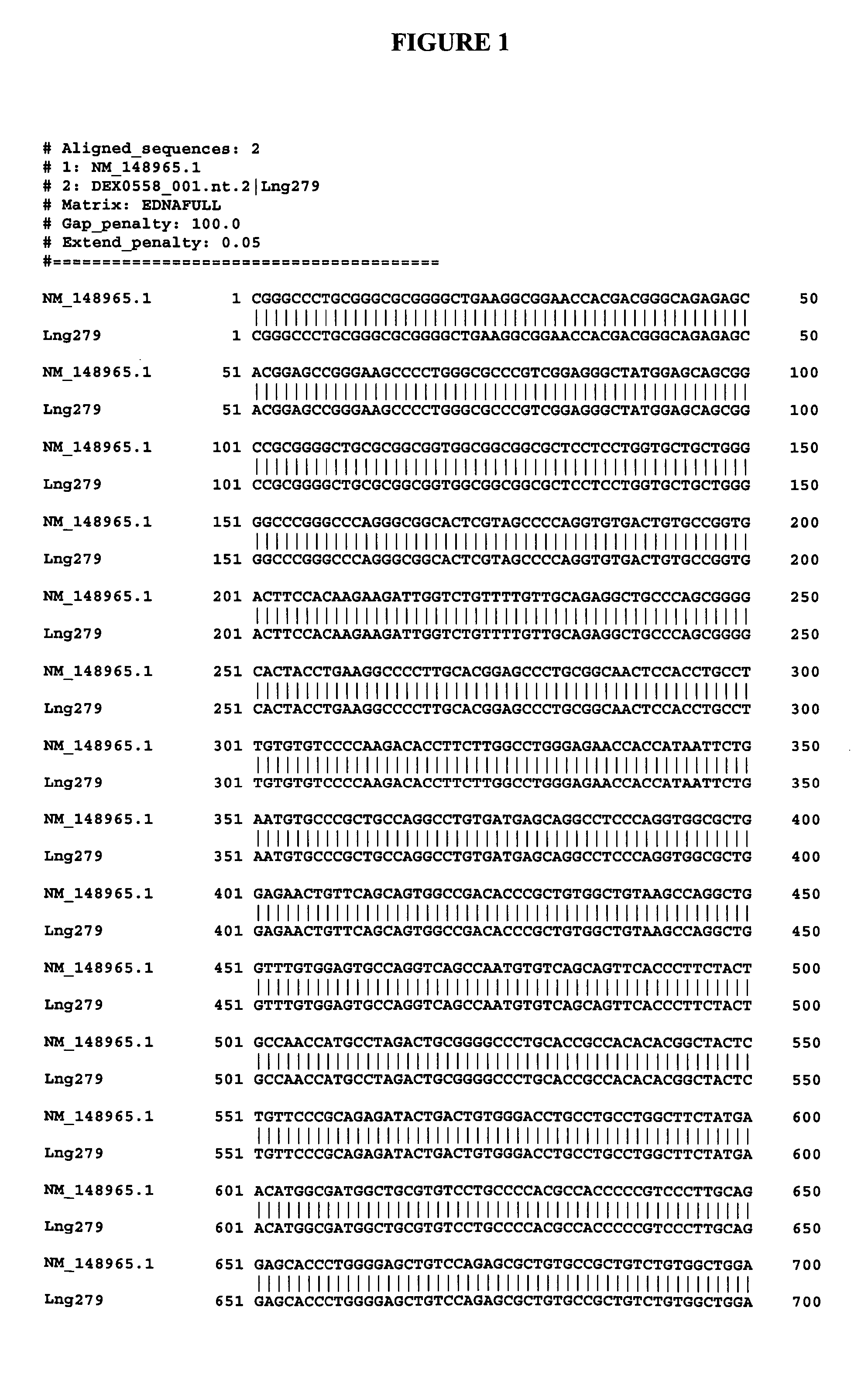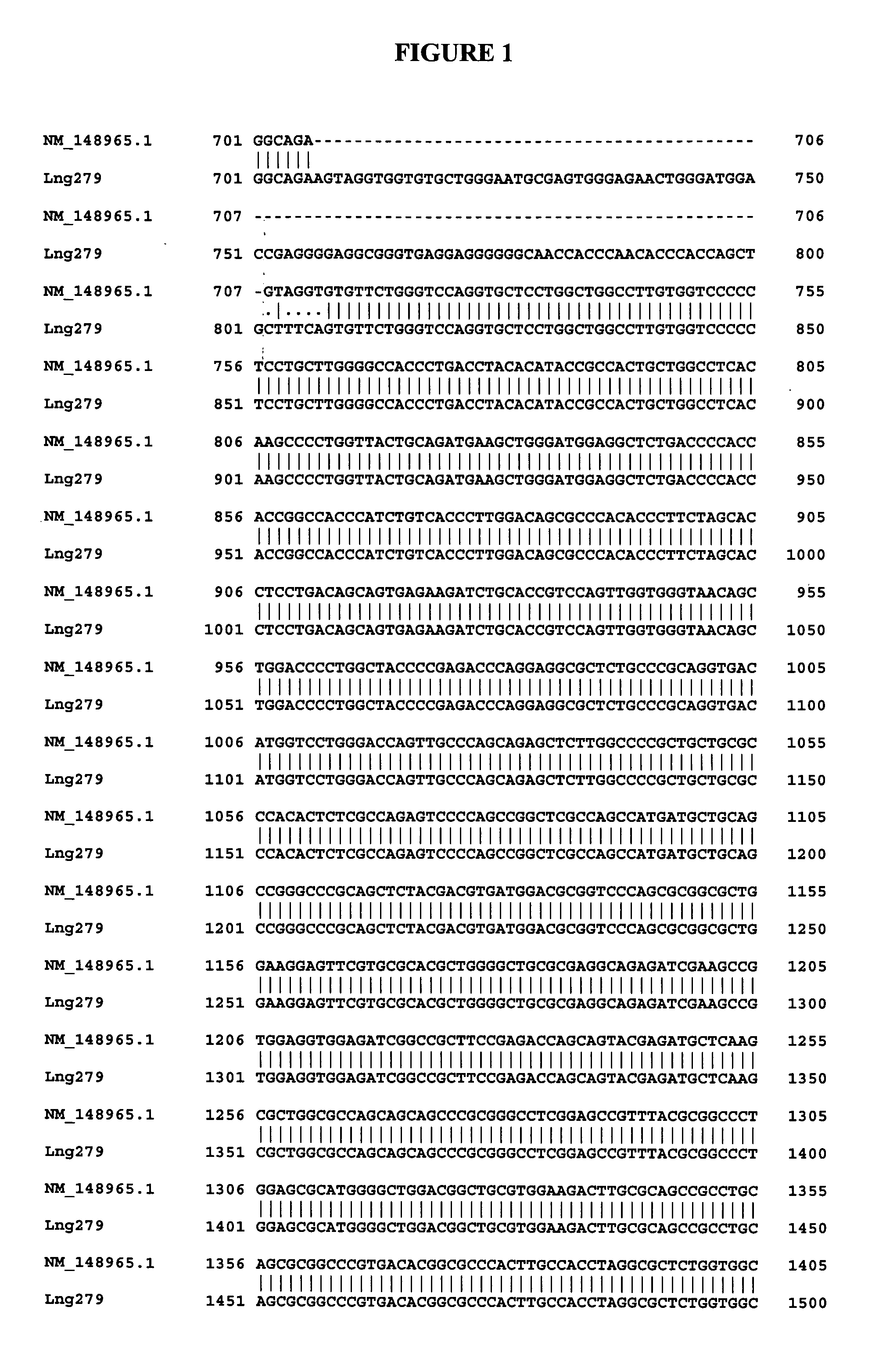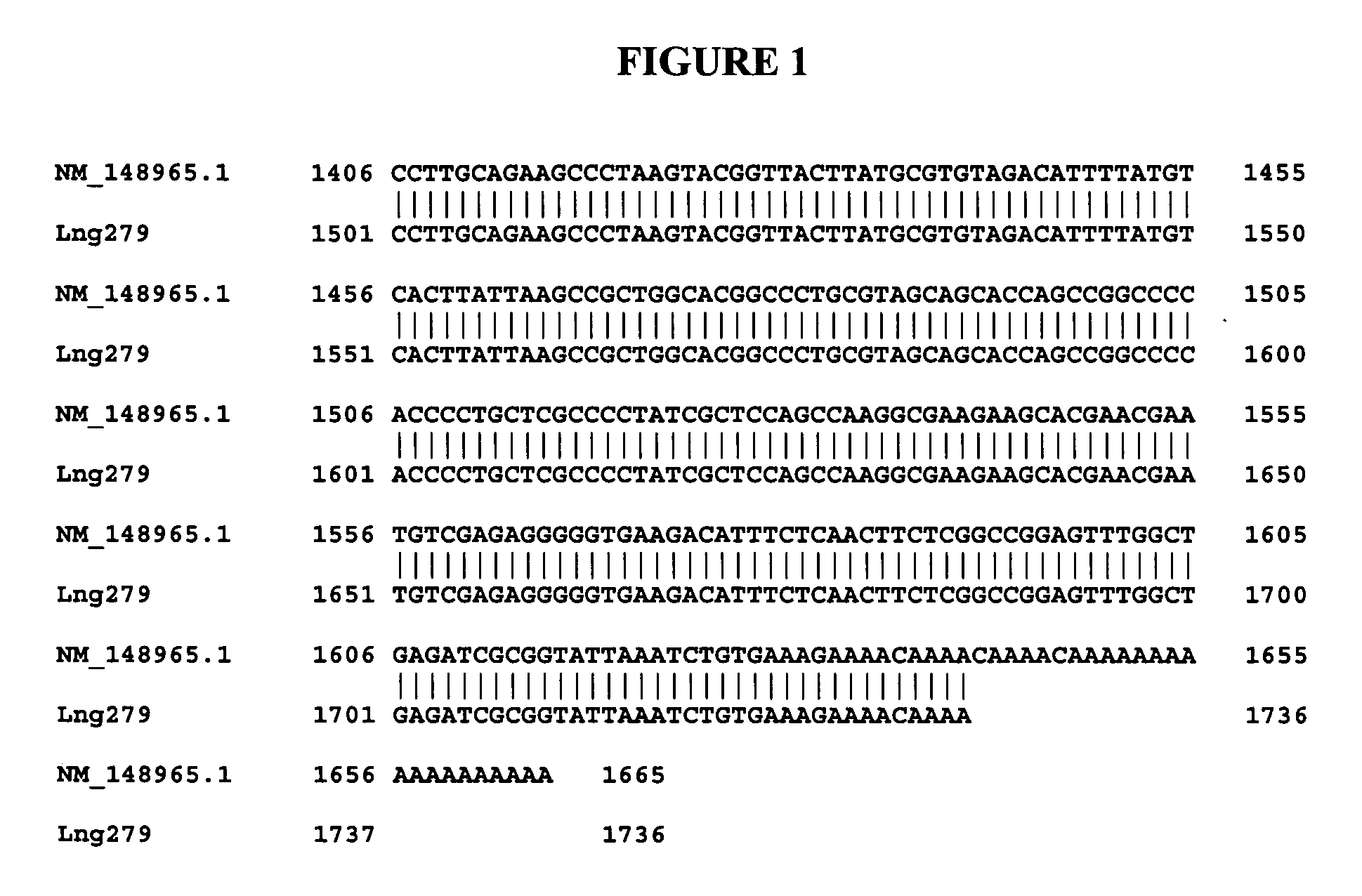Compositions, splice variants and methods relating to cancer specific genes and proteins
a technology of splice variants and cancer genes, applied in the field of newly identified nucleic acids and polypeptides, can solve the problems of reducing their effectiveness, limiting their usefulness, and preventing their widespread adoption, so as to improve the accuracy of predicting or detecting breast cancer risk
- Summary
- Abstract
- Description
- Claims
- Application Information
AI Technical Summary
Benefits of technology
Problems solved by technology
Method used
Image
Examples
example 1a
Alternative Splice Variants
[0485] We identified splice variant gene transcripts using the Compugen LEADS™ technology from Compugen Ltd. (Tel Aviv, Israel) as described below. These splice variants are either sequences which differ from a previously defined sequence or comprise new uses of known sequences. In general related variants are annotated as DEX0558_XXX.nt.1, DEX0558_XXX.nt.2, DEX0558_XXX.nt.3, etc. The variant DNA sequences encode proteins which differ from a previously defined protein sequence. In relation to the nucleotide sequence naming convention, protein variants are annotated as DEX0558_XXX.aa.1, DEX0558_XXX.aa.2, etc., wherein transcript DEX0558_XXX.nt.1 encodes protein DEX0558_XXX.aa.1. A single transcript may encode a protein from an alternate Open Reading Frame (ORF) which is designated DEX0558_XXX.orf.1. Additionally, multiple transcripts may encode for a single protein. In this case, DEX0558_XXX.nt.1 and DEX0558_XXX.nt.2 will both be associated with DEX0558_XX...
example 1b
Sequence Alignment Support
[0516] Alignments between previously identified sequences and splice variant sequences are performed to confirm unique portions of splice variant nucleic acid and amino acid sequences. The alignments are done using the Needle program in the European Molecular Biology Open Software Suite (EMBOSS) version 2.2.0 available at emboss with the extension org from EMBnet (embnet with the extension org of the world wide web). Default settings are used unless otherwise noted. The Needle program in EMBOSS implements the Needleman-Wunsch algorithm. Needleman, S. B., Wunsch, C. D., J. Mol. Biol. 48:443-453 (1970).
[0517] It is well know to those skilled in the art that implication of alignment algorithms by various programs may result in minor changes in the generated output. These changes include but are not limited to: alignment scores (percent identity, similarity, and gap), display of nonaligned flanking sequence regions, and number assignment to residues. These mi...
example 1c
RT-PCR Analysis
[0518] To detect the presence and tissue distribution of a particular splice variant Reverse Transcription-Polymerase Chain Reaction (RT-PCR) is performed using cDNA generated from a panel of tissue RNAs. See, e.g., Sambrook et al., Molecular Cloning: A Laboratory Manual, 2d ed., Cold Spring Harbor Laboratory Press (1989) and; Kawasaki E S et al., PNAS 85(15):5698 (1988). Total RNA is extracted from a variety of tissues and first strand cDNA is prepared with reverse transcriptase (RT). Each panel includes 23 cDNAs from five cancer types (lung, ovary, breast, colon, and prostate) and normal samples of testis, placenta and fetal brain. Each cancer set is composed of three cancer cDNAs from different donors and one normal pooled sample. Using a standard enzyme kit from BD Bioscience Clontech (Mountain View, Calif.), the target transcript is detected with sequence-specific primers designed to only amplify the particular splice variant. The PCR reaction is run on the Gene...
PUM
| Property | Measurement | Unit |
|---|---|---|
| nucleic acid | aaaaa | aaaaa |
Abstract
Description
Claims
Application Information
 Login to View More
Login to View More - R&D Engineer
- R&D Manager
- IP Professional
- Industry Leading Data Capabilities
- Powerful AI technology
- Patent DNA Extraction
Browse by: Latest US Patents, China's latest patents, Technical Efficacy Thesaurus, Application Domain, Technology Topic, Popular Technical Reports.
© 2024 PatSnap. All rights reserved.Legal|Privacy policy|Modern Slavery Act Transparency Statement|Sitemap|About US| Contact US: help@patsnap.com










